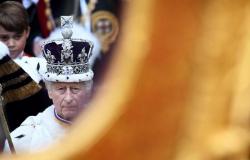In the end the guys from Corridor Crew did it: they recreated the yellow screen. The alternative to blue and green screen discovered by Walt Disney’s paid special effects artists in the mid-1960s. This is a legendary method in the world of visual effects. A technique considered superior to the classic green screen. It was first used to bring to life the scenes in which the fantasy world mixes with the real actors in Mary Poppins. A technique that they have often talked about on their YouTube channel, where they analyze and explain the creation of special effects, but which has been lost over time.
For about fifty years no one has used it anymore due to the glass prism it requires. Only three were created, then disappeared along with the practical knowledge of the method to achieve the effect. Together with the contribution of a researcher they managed to recreate the “ray-splitting” prism and put the technique to the test of time.
The green screen problem
Today one of the most used techniques is to film inside the volume: a huge LED screen in which the background images pass. The most widespread version, with the best cost-benefit ratio, is that of the green screen. The green screen brings with it a series of problems: it is not possible to film blurry images, if you wear clothes of similar colors to those of the cloth in the background the replacement with another image results in poor contouring. The green then, if poorly lit, bounces off the characters’ skin and their clothes and changes their tone.
The process with sodium vapor lamps (discharge lamps) avoids many of these problems. The technique was revolutionary at the time, but was not as developed as the later green screen.
How does the yellow screen technique work?
Instead of a green or blue screen, a white sheet is used which takes on a yellow tone when illuminated by low-pressure sodium vapor lamps. They are placed in a precise spectrum of yellow light which can be blocked by a filter or, on the contrary, can be the only thing that is received by the camera.
In essence, through a prism capable of splitting rays you can split the light passing through the lens onto two different films at the same time. One captures only the light generated by sodium vapor lamps, the other captures all the rest of the light spectrum, except the yellow of the lamps. You then obtain two images: one with the actors in color, the other with their silhouettes. By combining them, a “cut-out” image is obtained without the colors being altered and with the possibility of effectively applying the effect even on semi-transparent elements.
With all these advantages, why hasn’t this method been used until now? Simply because producing the prism is a very expensive process. Three were produced in the 1960s, then lost around the 1980s. Green screen provided a cheaper and less complex alternative, effectively supplanting yellow screen research and development. Until now. In fact, this is where the Corridor Crew artists intervene. Having long been obsessed with the question, they were joined by Paul Debevec, a researcher who has managed to replicate the prism, and were invited to try the technique.
The result
The video shows the experiment in detail. A “stress test” where the main subject is a clown with a dress full of colors “hostile” to normal chroma key and with transparent veils. On set they had to pay particular attention to ensuring that the reflected light was fully within the required spectrum and did not hit the subject.
The comparison between green screen and yellow screen is merciless. In experimental conditions the result is significantly better with sodium vapor lamps. Today, as underlined in the video, this technique can be considered the best among those that involve a chroma key, a background to replace. Currently, however, the spread of volume in sets has taken a step forward that has changed the paradigm with which these effects are thought of. LED panels are more versatile and generally offer very satisfactory results. It is therefore difficult to imagine a return to experimentation with prisms and yellow backgrounds. The generational leap will increasingly push innovation on volume screens and on the ability of artificial intelligence to facilitate the immersion of subjects in a fictional environment.
BadTaste is also on TikTok, follow us!
Recommended rankings
Tags: #60s Disney version green screen lost Cinema






